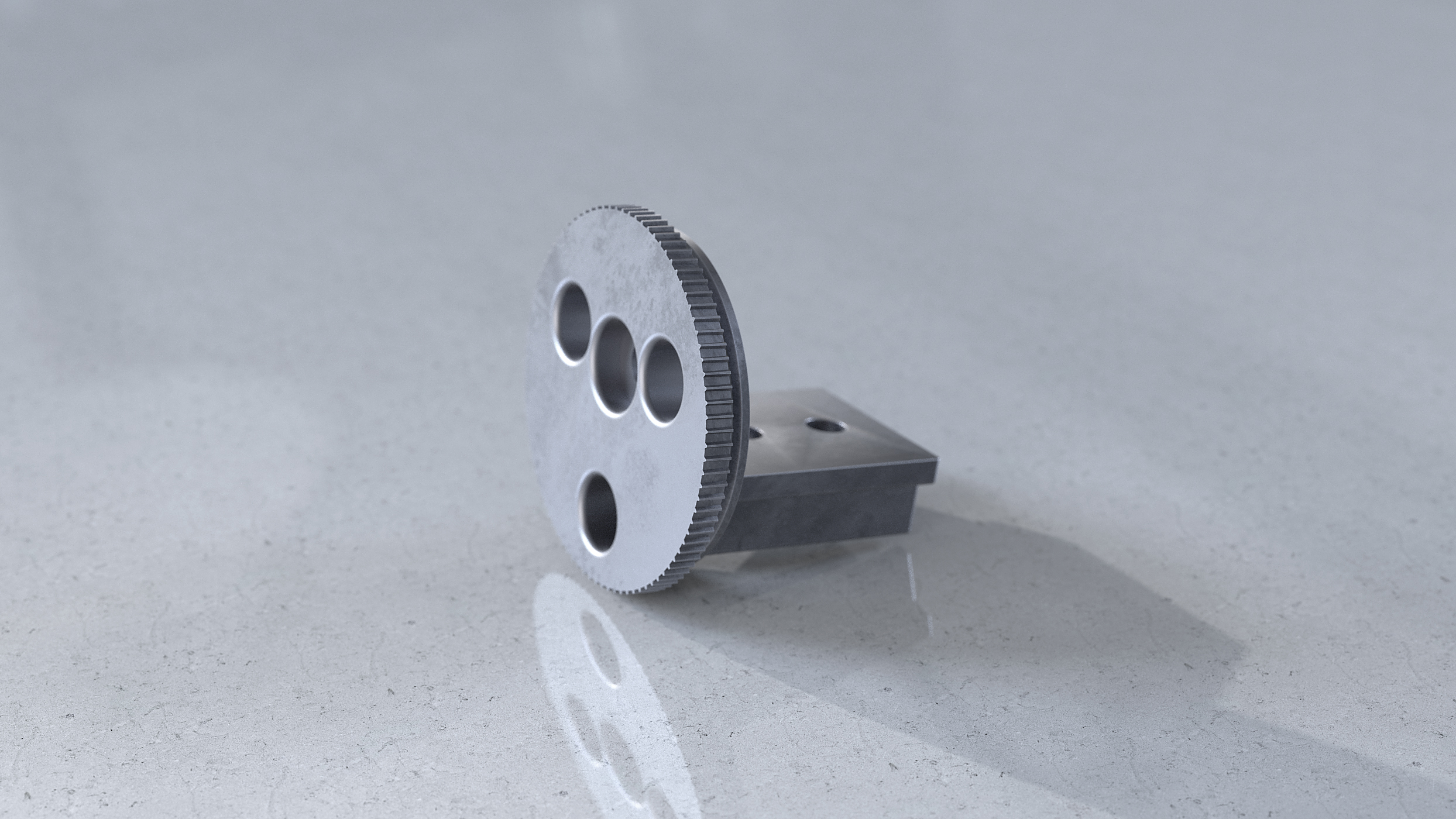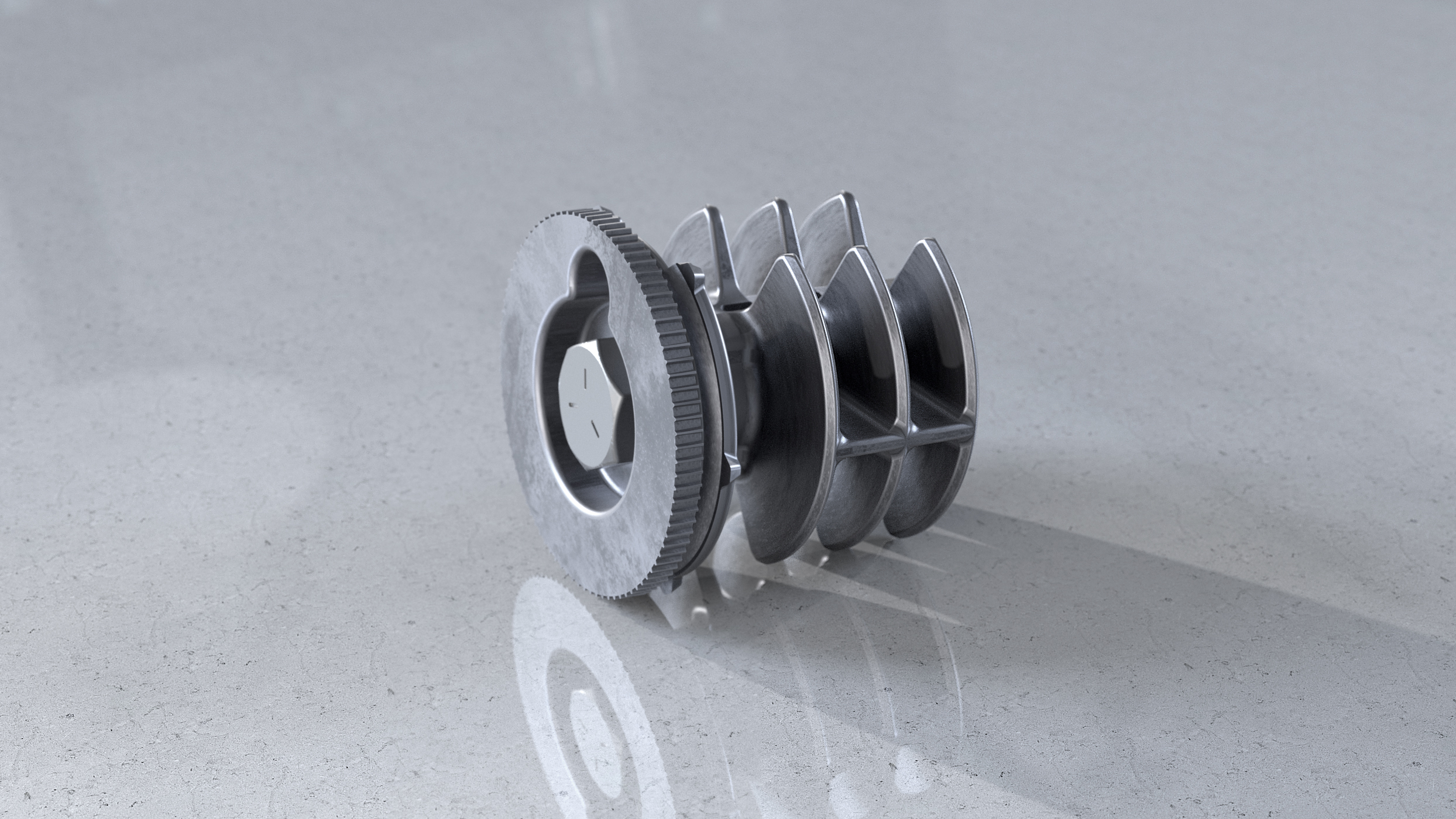Navigating stairways is something that people do everyday, but most never give a thought to the handrails that support them as they climb or descend the stairs or travel up or down ramps. Without handrails, stability decreases and the likelihood of a fall increases, especially in the case of the elderly, small children, and those with existing mobility issues.
However, handrails that are compliant with the Americans with Disabilities Act (ADA) increase the amount of support for everyone, not just for those with disabilities and mobility issues. Whether you’re climbing the stairs to your home with armloads of groceries or descending the steps at the library with an armload of books, being able to rely on a handrail that enables a firm grip—one in which the fingers flex towards the thumb—makes using a stairway much safer.
What is a Wall Mounted Handrail?
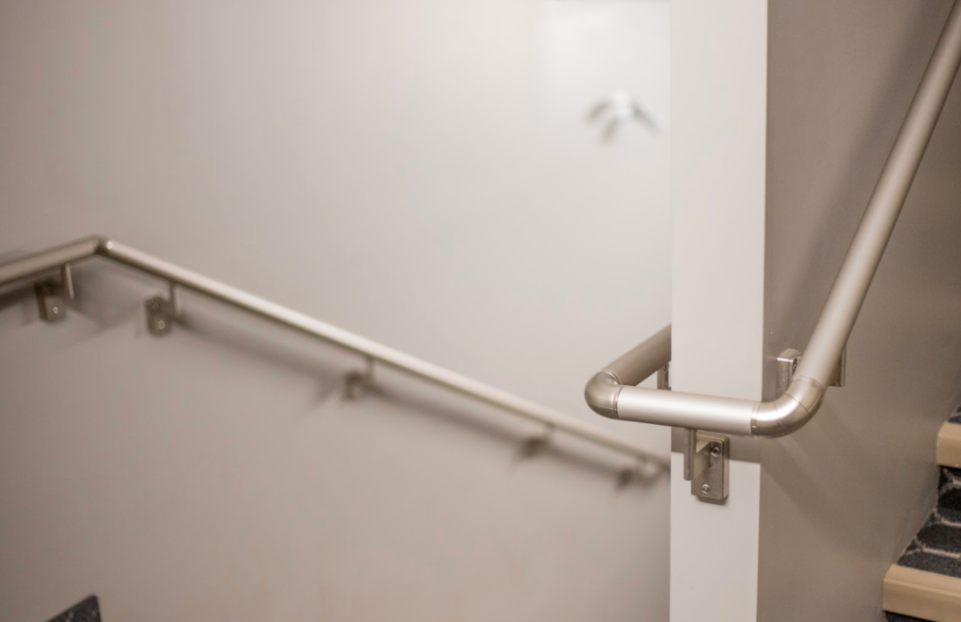
A wall mounted handrail is one that is attached directly to the adjacent wall with the aid of brackets and mounting hardware. Both exterior wall mounted handrails and interior wall mounted handrails must follow the angles and contours of the wall to which it is mounted, providing safety and stability for those using the stairway.
A wall mounted handrail differs from post mounted handrails in that it must be attached directly to a wall rather than installed on posts. Post mounted handrails require the extra step and cost of installing posts along the stairway, walkway, or ramp where the handrail is needed.
Wall Mounted Handrail Styles
Materials
Wall mounted handrails can be manufactured from a variety of materials, each with their own benefits and drawbacks.
Stainless Steel
Stainless steel is a beautiful material for wall-mounted handrails, and it can be used in a variety of different settings while contributing to the design and functionality of the space. However, stainless steel and stainless steel installation can be time consuming to design and is, therefore, also expensive. Though there may be better options for affordability, stainless steel is the most durable.
Wood
Wood handrails can be a beautiful addition to a home, but they require additional preparation and upkeep throughout their lifespan. This material may require sanding and staining and can split and splinter as it ages. Where compliance with ADA requirements isn’t necessary, wood handrails can be made to be more decorative, though this reduces the level of safety they provide.
Aluminum
Aluminum handrails are a wonderful blend of style and functionality. They create a modern look, complementing a variety of design styles while checking off all of the safety boxes. Choosing a round profile allows for a power grip that helps prevent falls and because of the ability to use connectors to join handrail lengths together, it’s possible to create continuous handrails regardless of the complexity or length of the stairway.
Aluminum can be anodized to increase its strength and create a handrail that won’t chip, flake, or rust. The anodizing process provides a beautiful finish for the aluminum handrail, giving a variety of finish options to complement nearly any design.
Angles
One of the benefits of choosing aluminum handrails is their ability to be joined with custom bends and splices that allow the handrail to be continuous from the bottom to the top of the stairway, regardless of its complexity. Whether there is an angle change on a landing that requires a 90-degree turn or an elevation change that requires a jog, aluminum handrails can accommodate anything.
End Caps and ADA returns
End caps are installed flush into the ends of a handrail to create a seamless profile. ADA compliance requires that the handrail includes a 90-degree return to the wall. A return ensures that clothing and bags won’t become snagged, potentially causing a stumble or fall.
Considerations for Selecting Wall Mounted Handrails
Applications
When choosing a wall mounted handrail, the first thing to consider is its application. First, determining whether it will be an exterior or interior wall mounted handrail will help to determine the best material. Residential and commercial building codes have slightly different requirements, so the type of building where the handrail will be installed must also be taken into consideration.
Placement
In order to be compliant with ADA regulations, making it as useful as possible for a wide range of users, a wall mounted handrail should be installed between 34” and 38” above the stair nosing–the front edge of the stair tread.
The ability to create a continuous handrail is another consideration when it comes to placement. Choosing a handrail that allows for a wide variety of bend and angle changes will ensure that the handrail will remain continuous for the length of the entire stairway.
5 Wall Mounted Handrail Design Ideas
1. Modern meets Rustic
In older buildings, wooden railings supported by balusters and newel posts look beautiful, but they present challenges when navigating a stairway. The balusters, or posts, that support the stair railing obstruct much of the lower portion of the rail, and the rail itself requires a pinch grip that only uses the strength of the fingers rather than the entire hand which presents safety issues. Pairing an aluminum handrail that meets ADA requirements with the original wood railing adds a modern element of safety to the design while still looking sleek and elegant.
2. Black on Brick
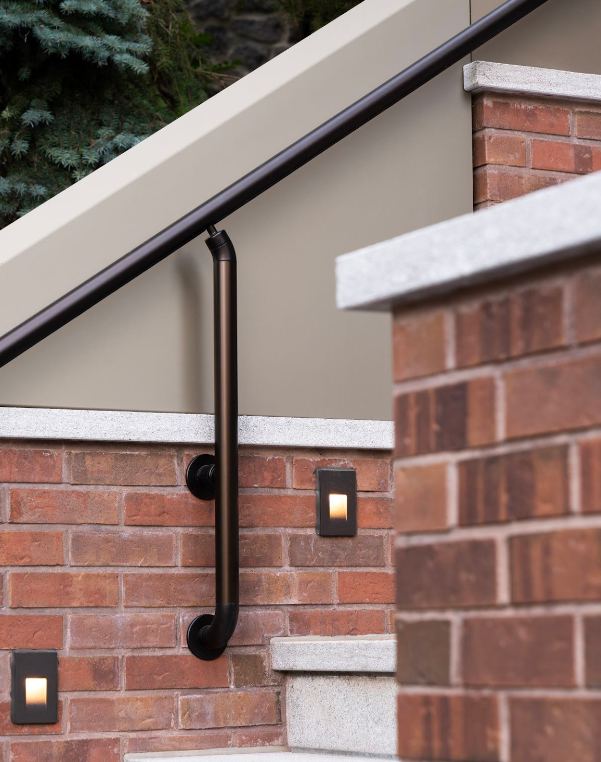
Creating added support with an outdoor wall mounted handrail is necessary in order to provide safety and stability when entering or exiting a home or office. Mounting a sleek black handrail to a brick wall draws a beautiful contrast between traditional and modern.
3. Silver and Champagne
A Silver handrail paired with Champagne-colored brackets, bends, and ADA wall returns adds a stylish touch to what could otherwise be a standard stairway. The continuous handrail creates the perfect touch of style while providing safety when navigating the stairs.
4. Dual Handrails
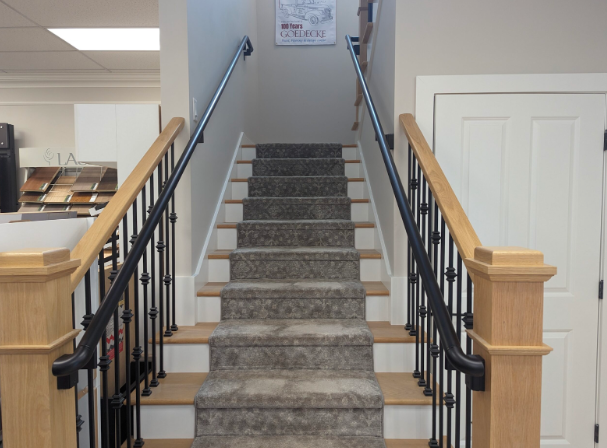
Installing a handrail on both sides of a stairway not only brings an aesthetically pleasing symmetry to the design, but it also provides stability for those traveling up and down the stairs. In commercial code, a handrail is required on both sides of the stairs.
5. Continuous Black with Brass
Creating a continuous handrail doesn’t have to be complicated. With Promenaid’s 90-degree bends, universal corner bends, and 90-degree wall returns, a continuous handrail that can handle landings and elevation changes is simple to install. The architectural bronze handrail handrail nicely compliments Antique Brass brackets and bends.
How to Choose the Best Wall Mounted Handrail
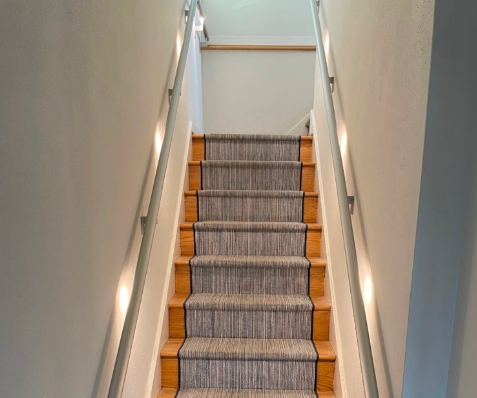
For a wall mounted handrail that is versatile, functional, and customizable, Promenaid stands as a leader in innovative handrail design. Patented twist and lock brackets ensure perfectly placed hardware and the extruded aluminum profile creates the perfect grip to provide the ideal amount of safety.
To explore more design ideas, use our design configurator and explore our gallery
If you would like assistance exploring handrails, reach out to an expert at Promenaid today for the perfect wall-mounted handrail solution for your home or business.






